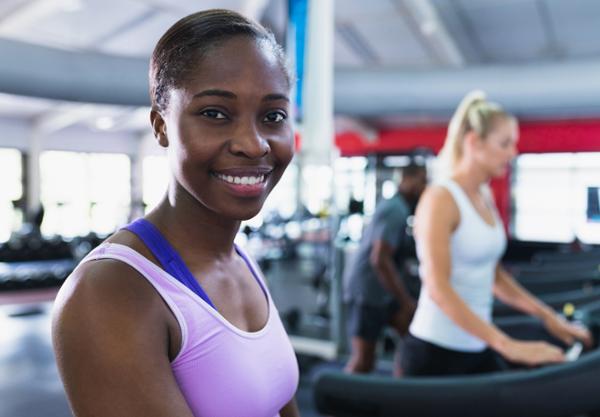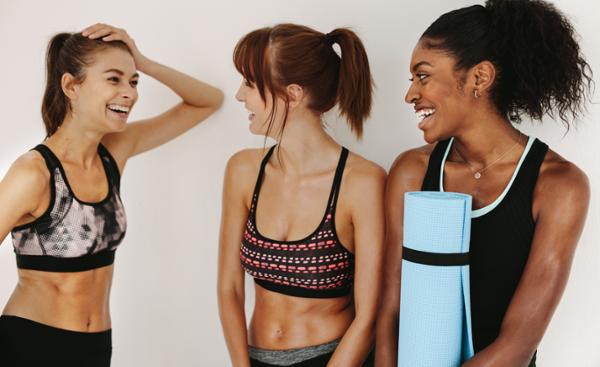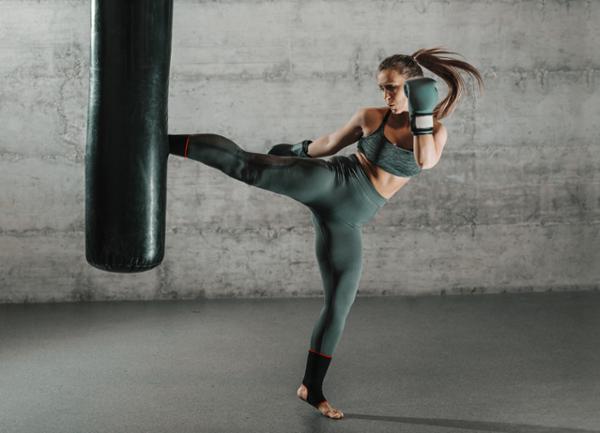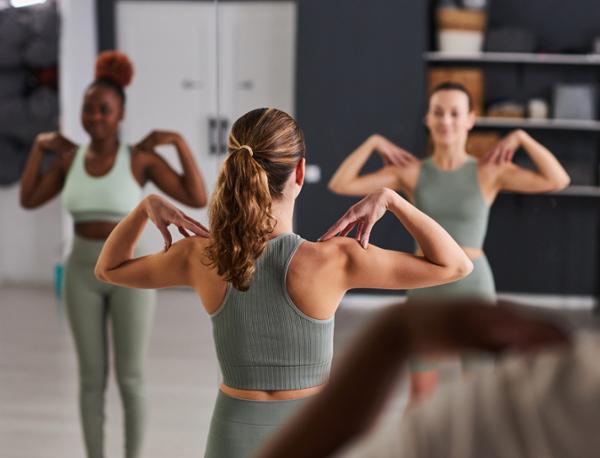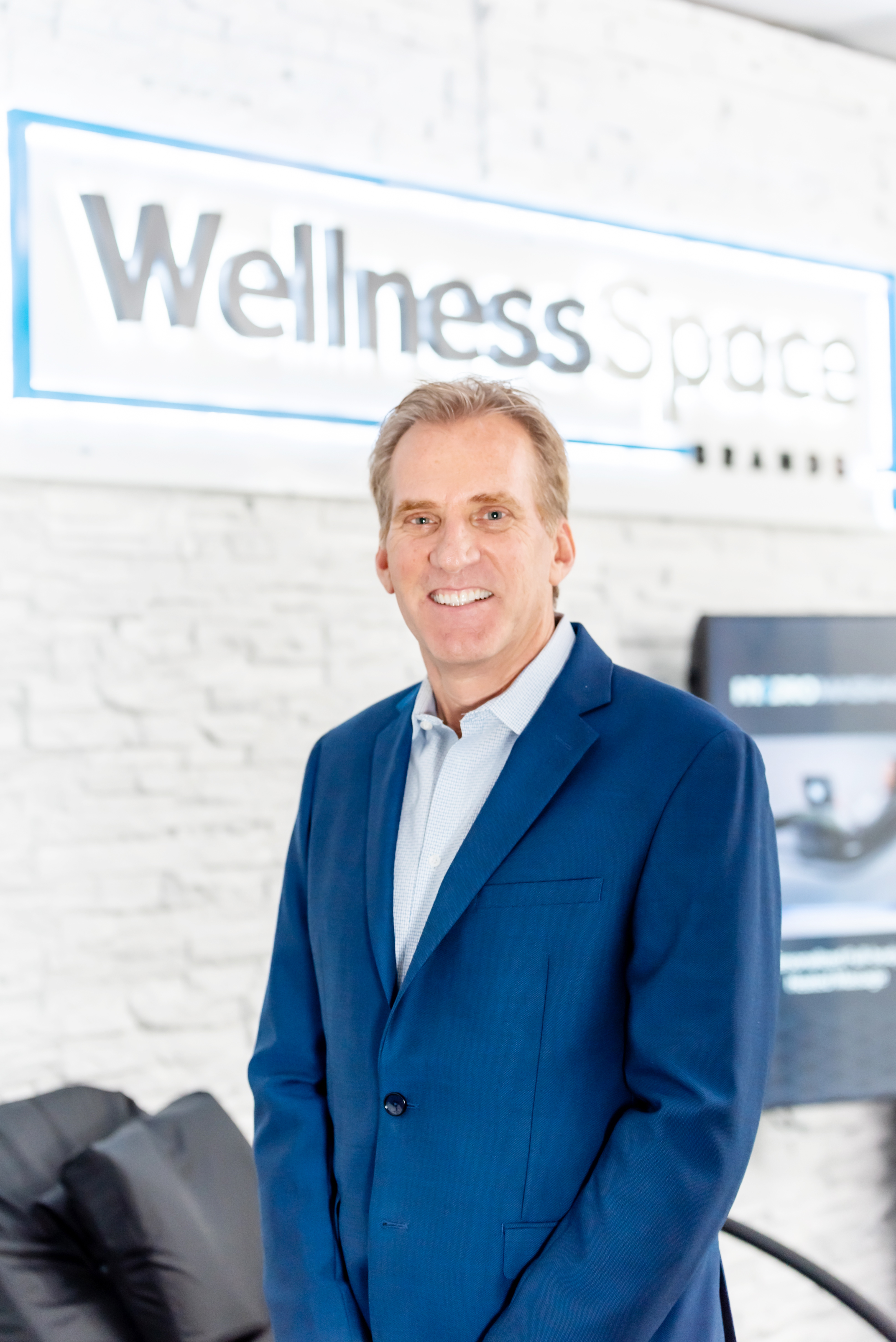features
Report: Support system
Women go through many physiological changes during their lifetime, all of which can be helped by exercise. Kath Hudson reports from the ACE Summit on Coaching and Training Women
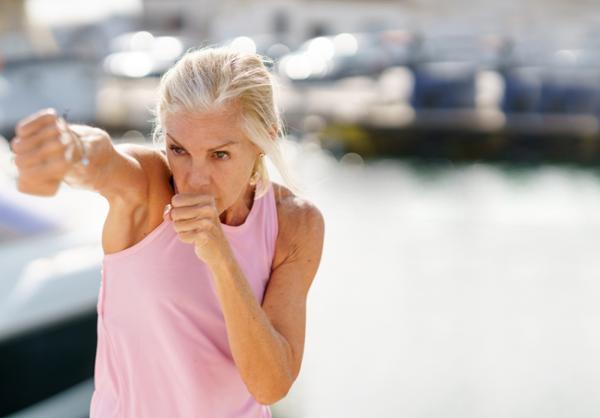
Many female life stages are misunderstood and underestimated by everyone – including women themselves, who very often become the butt of jokes and feel obliged to laugh at themselves.
But matters to do with hormones – for females and males of any age – should not be seen as an opportunity for eye rolling. Hormones cause challenges which need to be validated.
These days, with the support of knowledgeable fitness professionals, there’s an opportunity for gyms to become a supportive space for women at every life stage, according to experts presenting at the recent ACE summit, called Coaching and Training Women.
Puberty
Delegates heard that physiological changes start early. The average age at which menstruation starts in the US is 12, but hormone fluctuations begin a few years earlier, meaning that from the age of eight girls are changing.
This is likely to cause anxiety as they feel different but don’t understand why and this feeling can sometimes accelerate through puberty as the body changes, with breast development, wider hips and greater height. Girls also have to get used to moving their rapidly changing body.
For some it’s confusing to find themselves in possession of an adult body while they feel like a child and they may reject their new body as a result, leading to dysmorphia. They may also question their identity or become clumsy. Often they feel embarrassed and try to make themselves smaller, leading to problems with posture. Once periods begin there’s a new monthly hassle to negotiate. Will I leak? Can I exercise?
Keynote speaker and global fitness director of Fit4Mom, Farel Hruska, says promoting body confidence is key, making girls feel strong and empowered: “If she’s feeling ‘out of body’ the main rule about programming in puberty is promoting strength within the body and practicing movements which help her feel grounded, she explains.
“It’s extremely unfortunate that so many adolescent girls start to see their bodies in a dysmorphic way, so if you have the honour of coaching a girl, create a profound space where you can coach her for the strength she has, but has been told she hasn’t. Teach her to harness emotions like anxiety and empower her to step into and own her space. Emotions are superpowers,” he said.
PMS
Menstruation can bring a number of unpleasant side effects, such as irritability, mood swings, insomnia, bloating, breast tenderness and stomach cramps. Jiji Pollock, director of science at Institute of Motion, says that although Premenstrual Syndrome (PMS) get joked about, there are physiological reasons for the feelings that can accompany it and they should be validated. “Individual symptoms can be varied,” she says. “Have empathy and meet them where they are”.
Exercises which can help to alleviate symptoms of PMS include yoga moves such as cat/cow and hugging the knees to the chest while lying on the back for reps of 10 to 15 seconds.
Gently circling the knees while lying down can release lower back pain and a seated butterfly stretch boosts circulation in the hip area. Five minutes of deep breathing and meditation first thing in the morning can also be effective in controlling symptons of PMS.
Pre-natal
The next physiological change to come along for many women is pregnancy, which brings profound physical changes. The hormone relaxin flows through the body, loosening joints and ligaments in readiness for birth, but the laxity it creates can lead to hypermobility and joint instability.
“Gravity naturally pulls us forward, so add to that a growing baby and you start to see shoulders pulled forward, the pelvis tilting, hip flexors shortening and tightening,” says Hruska. “It’s important to use exercises which strengthen the posterior muscular chain to counterbalance this.
“Focus on changing these imbalances, stretch out the chest and work the upper back muscles. Also work on gluteal and lower body strength and hip flexor stretches, as well as three dimensional core engagement,” she said.
Exercise is recommended on most days of the week during pregnancy, so coaches should start working this into the pre-natal conversation. “With a healthy pregnancy nothing is high risk. It’s a state of health and not a disability, so treat women as the athletes they are” says Hruska.
It’s also important to start moving in multiple planes of motion to get pregnant women used to the movement patterns their new role as a mother will bring: “Start combining exercises which increase a dynamic asymmetric load,” says Hruska.
“Try using a resistance band from one side and then the other, to mimick how she’ll move with a baby on her hip and strengthen this movement to avoid imbalances.”
Post-natal
After giving birth physical changes can be even more profound and for many, the body is in postural dysfunction. “As women try to heal they are also caring for their baby and the day-in-day-out movement is a fitness event in and of itself: pushing a buggy, putting the baby in the cot, bending and twisting, putting the baby in a ridiculously heavy car seat and then putting that in the centre of the back seat. All this needs a consistent emphasis on core strength in multiple planes of motion,” said Hruska
These physical challenges, on little sleep, coincide with what for some can be a real identity crisis for first time mums in terms of how to handle the massive responsibility of keeping a baby alive. “It’s an interesting and conflicting space for a lot of women,” says Hruska, “and can spark a range of emotions – excitement, joy, fear, anxiety, depression. As a trainer you can validate women’s feelings and reassure them there’s nothing wrong with being emotional – it’s a natural part of this stage.”
During this time the focus needs to be on the rehabilitation of core musculature, alongside the continued focus on movements for motherhood. Some clients might want to come back fast, but it’s important to start and progress slowly, creating strength and connection between the brain and body.
Exercise recommendations including lying supine, knees bent, creating core engagement. With one hand on the belly, lift the head and shoulders off the ground and focus on breathing while the hands feel the core engaging. Movement, such as heel slides, can then be added one at a time while engaging the core.
Since post-natal is an intense phase in women’s lives, Hruska recommends having musculoskeletal and mental health experts to refer on to if a client presents with symptoms beyond the scope of the fitness professionals’ skills and experience.
Perimenopause
The perimenopause can start anytime from the mid-30s to the mid-50s when oestrogen levels start to drop. It can herald its arrival with erratic periods and heavy bleeding. With this can come a feeling of doom about the arrival of the final chapter, along with brain fog, hot flushes/flashes, weight gain, insomnia, fatigue and reduced libido.
When working with women at this stage, bear in mind it’s a tough time of life and they’re likely to be shouldering a lot of heavy burdens. Ask them about this, then validate and celebrate their experience.
Annually, 50 million women enter perimenopause. In the West this phase can have a social stigma, while in Asia women of this age are revered. “It’s important to start being the voice that reveres change and experience,” says Hruska. “This phase should be celebrated rather than feared. As a trainer, encourage your women clients to own their power and take up space, not believe they are ‘less than’. Treat the client as the strong woman they are.”
For those women who are new to exercise start at a low level so they immediately have a success story and then build it up. Include balance challenges, weight bearing and resistance training to work on bone density and build muscle mass, which reduces after the age of 50. Upper back strength and chest stretches are important as well, as continued core focus in all planes of motion.
“Find out her desires in her own journey, says Hruska. “Use open questions to build a connection and trust, then respond in a way which leads to more questions and a deeper understanding.
“Use your active listening skills, you’ll find there’s always more under the surface,” she says. “I tell them: I have belief in you, so borrow my belief until you have your own. I already know you’re amazing. Lean on that.”
Post-menopause
The post-menopause stage is reached is when one year has elapsed clear of a menstrual cycle. By 2030, 1.2bn women worldwide will be post–menopause and this phase can come with weight gain and heart and osteoporosis risk.
Many women struggle to maintain their weight during this time for many physiological reasons.
Firstly, the rate of both resting and non-resting energy expenditure slows down, while appetite is stimulated. Weight gain – especially around the trunk – creates leptin resistance, which leads to more hunger. On top of this, a little known fact is that lower oestrogen levels speed up stomach emptying which creates hunger pangs.
“When female clients are struggling to maintain their weight don’t let them blame themselves for lack of willpower or motivation and remember there are roadblocks in place,” says menopause specialist, Jan Schroeder, professor at the Department of Kinesiology, Long Beach State University.
“The good news is that exercise helps the body regulate hormones and improves insulin sensitivity, which assists with appetite regulation, says Schroeder. “It also improves melatonin levels, helping women sleep better.
“Improved sleep in turn reduces fatigue and means more energy to exercise, which helps protect the heart and also guards against osteoporosis.”
Schroeder says research shows that active females are at an advantage over those who were previously inactive, showing a lower BMI, greater lean muscle mass and lower central adiposity.
If they’re able to maintain activity level these women tend to maintain their weight, waist circumference and abdominal fat levels.
Women who have always been active but aren’t as active as they were before menopause, are still better off than previously inactive women, but will see some changes in body composition.
For those who have historically been inactive, exercise still helps.
Schroeder says the first step is to use trackers, step counters, or fitness logs to understand women’s activity levels and where they’ve become inactive. If, for example, they tend to sit down all afternoon, build some activity into the middle of the afternoon, even if it’s only walking up and down stairs. She also recommends working with the client to create a behavioural contract which gives them ownership of what they’ve agreed to do and then checking-in with them regularly.
“Any exercise is better than nothing,” says Schroeder. “While 150 minutes of low to moderate intensity each week is the ideal, it’s okay to start with as little as 20 minutes and build up slowly.
“At the higher end, research shows dramatic benefits in moving up from 150 minutes to 300 minutes a week and upping the intensity levels,” she says. “An eight-week study into high intensity cycling showed a 5 per cent decline in fat mass.”
The final speaker at the ACE conference, Pilates specialist Mychele Sims, emphasised the point that one size does not fit all and every woman should be empowered on their own journey: “Embrace diversity, respect boundaries, don’t push your female clients beyond what they’re comfortable with,” she said. “Listen actively, giving them your full attention and be prepared to provide feedback when appropriate."

“It’s extremely unfortunate that so many adolescent girls start to see their bodies in a dysmorphic way, so if you have the honour of coaching a girl, create a profound space where you can coach her for the strength she has, but has been told she hasn’t. Teach her to harness emotions like anxiety and empower her to step into and own her space. Emotions are superpowers,” – Farel Hruska

"Individual symptoms can be varied. Have empathy and meet them where they are," – Jiji Pollock
The (re)productive years. Side effects can include irritability, stomach cramps, back pain, nausea, mood swings and insomnia.
Women who grow a baby and give birth will experience loosened joints and ligaments and changes in balance and posture. They can also experience fatigue, mood changes and feel overwhelmed.
The time before the menopause which can be characterised by erratic periods and heavy bleeding, hot flushes, night sweats, weight gain, loss of libido and anxiety.
The transition time the perimenopause and postmenopause, when ovulation stops. Women may experience anxiety or depression, vaginal dryness and an increased risk of certain cancers.
Starts 12 months from the last period. Usually between the ages of 50 and 52. During this time women are at greater risk of heart disease, urinary tract infections and osteoporosis.
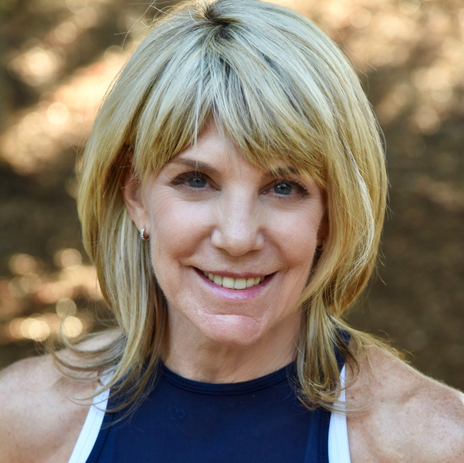
• Women have more slow twitch than fast twitch muscle fibres (giving endurance vs power and explosive movements).
• Women demonstrate higher fatigue resistance compared to males. They respond to higher reps, additional sets, higher volume and time under tension and relatively lower loads.
• Do a few assessments to get a full picture of what’s happening, looking at the way she moves, her posture, as well as her lifestyle and what daily activities and sports she needs to perform.
• Get a good balance between the front and back of the body.
• Make sure the fitness programmes combine a mix of balance, flexibility and mobility.

"When female clients are struggling to maintain their weight don’t let them blame themselves for lack of willpower or motivation and remember there are roadblocks in place,” – Jan Schroeder
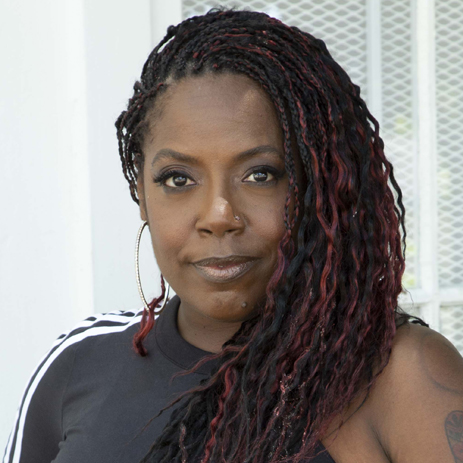
“Embrace diversity, respect boundaries, don’t push your female clients beyond what they’re comfortable with. Listen actively, giving them your full attention and be prepared to provide feedback when appropriate," – Mychele Sims
• Exercise helps women of all ages, is safe during a healthy pregnancy and very important during the perimenopause, menopause and postmenopause.
• Women go through many physiological transitions in a lifetime which are each accompanied by mental and emotional shifts. Validate these shifts to help them step into their new identity and work on keeping the mind-body connection so dysmorphia doesn’t set in.
• From puberty, females often feel awkward and try to make themselves smaller, empower them through exercise to take up space.
• Train the core, train balance, train the postural muscles.
• Resistance training is crucial after 50 when muscle mass starts to decline.
• Know who to refer on to if necessary, such as mental health experts or physiotherapists.
• Yoga, Pilates and Tai Chi support sleep and mood, although there is currently no research to show the impact they have on weight management.
